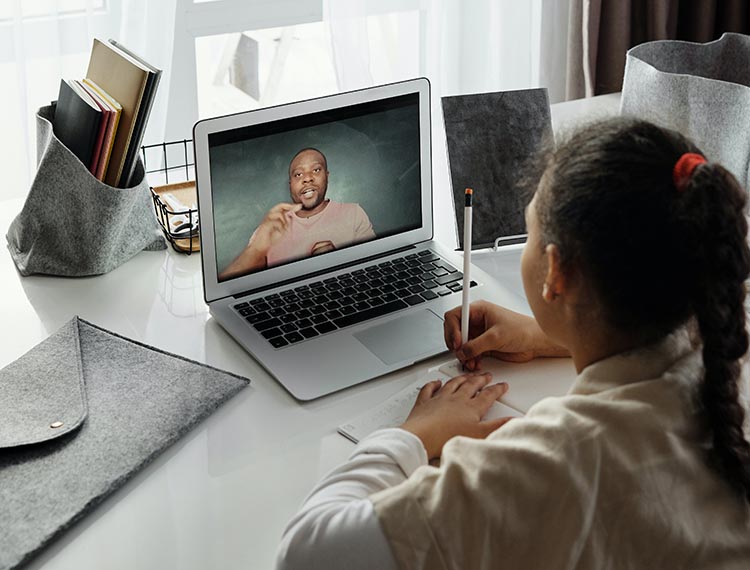Inequalities in home learning experiences improved over the pandemic – but targeted interventions will be essential to closing the gaps that the first lockdown widened

The quality of home learning in England improved substantially over the first year of the pandemic, with particularly big improvements for poorer children. This much-needed improvement is welcome – but, on their own, more equal experiences going forward won’t be enough to overcome the large inequalities that the first lockdown has baked in.
Limited support and unequal provision for self-isolating students during Autumn 2020 also worked against efforts to address lost learning during that term. The resources provided to self-isolating students in the Autumn 2020 term were far worse even than during the first lockdown. And, with a quarter of parents believing that it will take their child at least a year to catch up, schools and teachers will be facing big challenges as they meet their new classes this week.
One challenge will be ensuring that the pupils who most need support access it. While the majority of parents support tutoring programmes to help children catch up on lost learning, the poorest families were the least likely to accept an offer of catch-up tutoring. Among the poorest fifth of families, 36% of pupils had been offered tutoring by March 2021, but nearly a third of these chose not to take it up – by contrast, while a similar share of those in the most affluent families had been offered tutoring, only 1 in 7 of them refused.
These are among the findings of a new report by researchers at the Institute for Fiscal Studies, funded by the Nuffield Foundation. They analyse data from two specially designed online surveys (in April/May 2020 and February/March 2021) to assess how children’s learning evolved over the course of the first year of the pandemic.
The report also finds that:
- Home learning improved substantially over the course of the pandemic, especially for secondary school pupils. Compared with the first lockdown, the second round of school closures saw secondary pupils’ learning time rise from 22 to 29 hours a week (22 to 26 hours a week among primary school pupils).
- The share of pupils being offered online classes grew by almost 30 percentage points between April/May 2020 and February/March 2021. Pupils were also more likely to be able to access these classes, as more of them had access to devices at home.
- However, despite these improvements, 40% of children did not meet the government’s minimum guidelines for learning time even during the second period of school closures.
Compared with the first lockdown, the improvement in home learning experiences in early 2021 helped to reduce inequalities between disadvantaged children and their better-off peers.
- Among those who were learning entirely remotely, children from disadvantaged families spent a similar amount of time learning each week to that spent by their better-off peers. During the first lockdown, children in the poorest fifth of families had done nearly 8 fewer hours of learning per week than those in the richest fifth.
- And, compared with the first lockdown, poorer families were much more likely to be offered online classes by their schools – and to have the technology at home to access them. During the second period of school closures, the richest pupils were 5 percentage points more likely to be offered interactive resources such as online classes than the poorest pupils (89% vs 84%). During the first lockdown, that gap had been 20 percentage points (67% vs 47%). Poorer pupils also benefited from expanded access to in-person schooling during the second period of school closures.
Outside of national school closures, however, provision for absent students was poor.
- On average, pupils missed around one-tenth of school days during the Autumn 2020 term.
- Just 40% of pupils had access to interactive learning resources such as online classes when learning at home during the Autumn 2020 term. This is a substantial fall from the over half (55%) of pupils who had been offered such resources during the first lockdown.
- Support was particularly lacking for poorer pupils. While 43% of secondary school pupils in the richest fifth of families had access to online classes while self-isolating, just 35% of their peers in the most disadvantaged homes had access to live or pre-recorded lessons.
Adam Salisbury, a Research Economist at IFS and an author of the report, said:
‘Thanks to the efforts of teachers, schools, families and policymakers, the second round of remote learning went far better than the first time around. But even with this welcome improvement, many children still struggled with home learning; around four in ten pupils did not meet the government’s minimum guidelines for learning time during the second round of school closures. With this huge hit to children’s learning we have seen so far, it is perhaps unsurprising that a quarter of parents think their child will need a year or more to recover learning lost during the pandemic.’
Angus Phimister, a Research Economist at IFS and an author of the report, said:
‘The first lockdown was particularly tough on the schooling of children from disadvantaged backgrounds, who spent around 8 fewer hours a week learning than their better-off peers. Welcome improvements during the second round of school closures meant that learning experiences looked much more similar. But catch-up policies need to be carefully designed to be taken up by poorer pupils if they are to have any chance of putting a dent in the educational inequalities that have grown so much wider during the pandemic.’











Responses